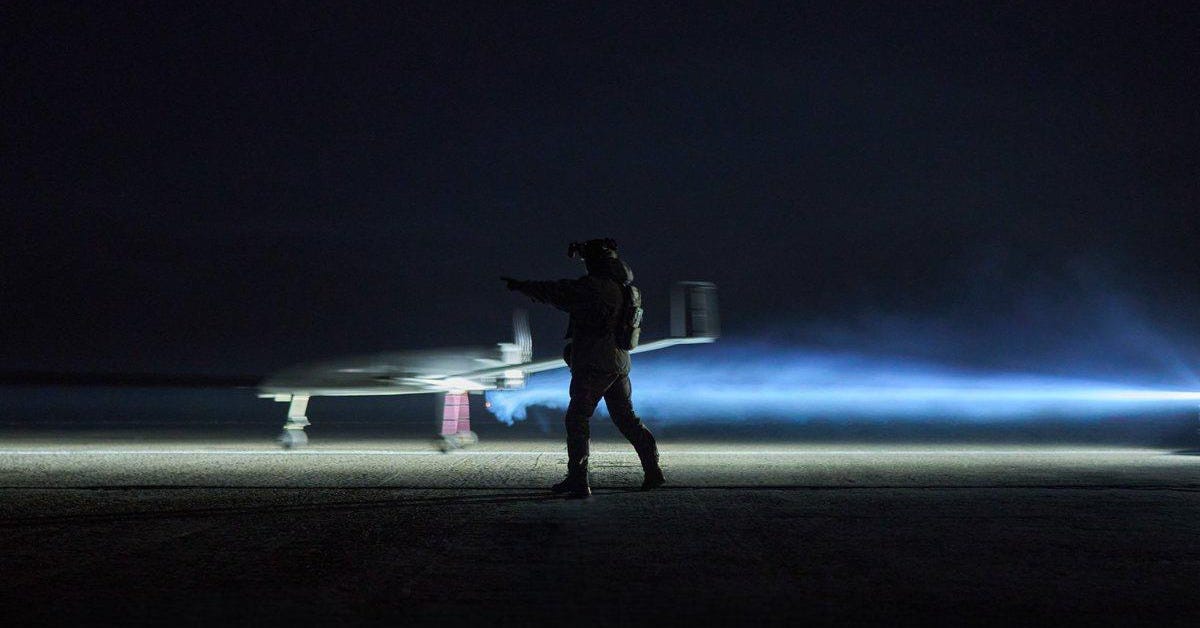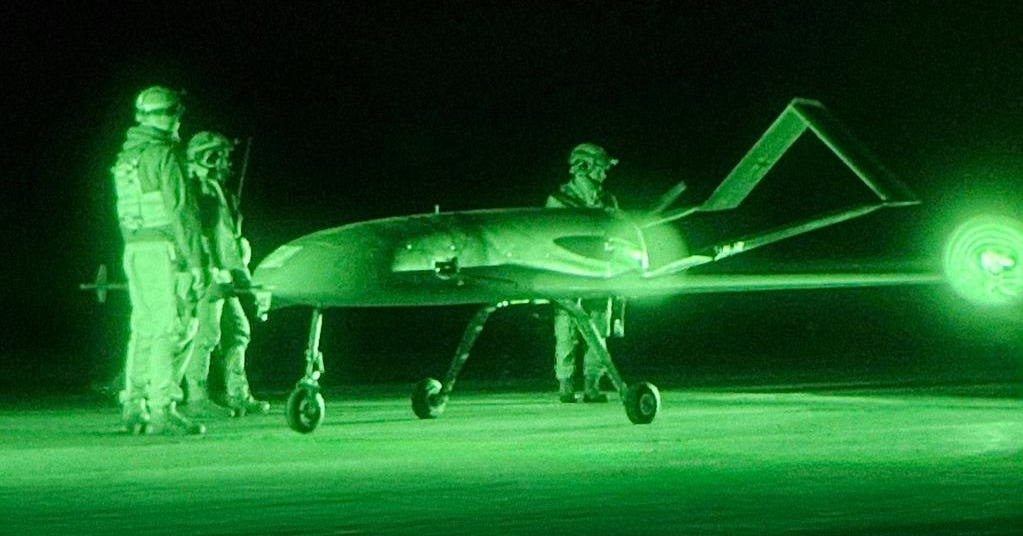Ukraine's Drone Capabilities, Examined
A new kind of aerial warfare
The Ukrainian air force was at a serious disadvantage when Russian forces widened their war on Ukraine on Feb. 24. 2022.
Ukrainian brigades operated just 125 aging, Soviet-vintage Mikoyan MiG-29s and Sukhoi Su-24s, Su-25s and Su-27s. Russian regiments operated ten times as many jets—and also held the edge in radar coverage, long-range munitions and electronic warfare.
Against the odds, however, Ukrainian air power hasn’t just survived more than three years of grinding warfare against a much more powerful foe—it has evolved into a high-tech force capable of taking the fight to the Russians.
It’s not the air force that’s going on the offensive, however. It’s a new air arm: the Ukrainian defense ministry’s separate Unmanned Systems Forces, the world’s first independent drone force, which stood up on Feb. 6, 2024 and has, in a heady year and a half, mobilized the world’s largest and most capable arsenal of long-range strike drones.
Led by its 14th Unmanned Aircraft Systems Regiment, the USF strikes deep inside Russia on a nearly daily basis, damaging airfields, industrial sites and oil refineries—and doing so at low risk to the USF’s roughly 5,000 personnel.
The USF wasn’t responsible for the June 1 complex attack that targeted several Russian air force bomber bases—and damaged or destroyed potentially dozens of hard-to-replace bombers. That operation was planned and executed by Ukraine’s State Security Service using short-range first-person-view drones smuggled near the bases by hijacked Russian trucks.
No, the USF conducts less spectacular—but far more frequent—attacks using long-range drones. The increasingly damaging raids, now extending as far as 1,000 miles into Russia, raise the cost of the war for Moscow by destroying munitions and fuel stocks and occasionally even aircraft—and by depressing Russian oil refining and compelling Russian firms to switch to exporting less valuable unprocessed petroleum.
How Ukraine has managed to build the world’s leading drone air force while at war is a question only future historians can fully answer. But it’s hard to deny that Ukraine’s expansive high-tech industry—hundreds of startups and small workshops spread across the country—has played a critical role.
Where the Kremlin has centralized drone development and production in a few corrupt industries, the defense ministry in Kyiv spread it out, empowering tiny teams to try out their best ideas, and rewarding the best with lucrative contracts that are often fattened by financing from Ukraine’s closest allies.
First tentative raids
On June 22, 2022, four months after a powerful Russian force rolled east across Ukraine, the Ukrainians went on the offensive—in the air. A pair of explosives-laden drones motored at least 100 miles from free Ukraine and struck the oil refinery in Novoshakhtinsk, in Rostov Oblast in western Russia.
The blasts inflicted only minor damage. But they signaled what would, more than two years later, become a main effort in Ukraine’s war strategy.
Strikes on Russian airfields damaged or destroyed several Tupolev Tu-22 bombers and blew up hundreds or even thousands of aerial munitions including KAB precision glide bombs and Kh-101 and Kh-555 cruise missiles.
Raids targeting critical defense industries—in particular, factories building Russia’s Iranian-designed Shahed attack drones as well as components for fiber-optic-guided short-range quadcopters—throttled the supply of critical offensive systems to Moscow’s regiments.
Perhaps most significantly, Ukrainian drone attacks on Russia’s 20 or so large oil refineries in late 2024 and early 2025 depressed Russia’s production of petroleum products—gasoline, for example—by as much as 10 percent, with cascading effects on Russian military logistics and exports.
“These cascading effects, which erode Russia’s economic resilience, increase operational costs and expose vulnerabilities in its energy-dependent war economy,” explained Olena Lapenko, general manager on security and resilience at the DiXi Group think tank in Kyiv.
With a growing stable of bomb-dropping or self-exploding drones capable of reliably traveling as far as 1,000 miles inside Russia, Ukraine can hold at risk the most important machinery of Russia’s wartime economy. The USF’s drones are doing, at low cost and risk, what the U.S. and Russian air force’s cruise-missile-armed heavy bombers do, but at much higher cost and greater risk.
It’s not fair to compare, for example, one of Ukraine’s UAC FP-1 strike drones—ranging just 1,000 miles with a warhead weighing up to 250 pounds—with, say, a Northrop Grumman B-2 stealth bomber ranging 6,000 miles with 20 tons of precision bombs in its bays.
But an FP-1 might cost just $100,000. Ukrainian industry builds dozens of similar drones every month. By contrast, each B-2 cost $2 billion. There are just 19 in the U.S. Air Force inventory.
The Ukrainian USF can’t control the air over Ukraine—to say nothing of controlling the air over Russia. But exploiting gaps in Russia’s fraying air-defense network, it can hit the Russians where it really hurts and inflict what Lapenko called “systemic stress.”
As more drones launched starting last fall, Russian leaders panicked. In March, they agreed to halt strikes on Ukrainian power plants if the Ukrainians would halt strikes on Russian refineries. That moratorium on energy raids continued at least through May. But Ukrainian attacks on other Russian targets continued.
A billion dollars, up in flames
The Russian defense ministry’s Main Missile and Artillery Directorate, or GRAU, maintains some two dozen munitions depots across Russia, together storing millions of tons of ammunition. On April 22, Ukraine’s long-range drones struck one of them: the 51st GRAU Arsenal just east of Moscow, 320 miles from the border with Ukraine.
The arsenal exploded in a towering fireball. Fragments rained on the surrounding community as rounds cooked off.
The strike on the 51st GRAU arsenal may have destroyed hundreds of thousands of tons of munitions. It was one of the most destructive in a series of Ukrainian strikes targeting Russian munitions dumps and weapons factories.





Great read!
Ukrainian drone manufacture in some ways resembles a Hydra. Being decentralised, it may be possible to lop off the odd tentacle or two but those can reestablish themselves quickly whilst the rest continue to flourish.